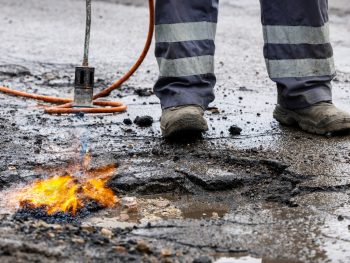Council road maintenance in England nose-dives to five-year low, RAC finds
Council road maintenance in England has fallen to a five-year low, new RAC research reveals.

The RAC says road maintenance in England has possibly reached a new low point
Just 4,144 miles of roads received any kind of improvement work in 2022/23; down 45% or 3,366 fewer miles compared to the 7,510 miles treated in 2017/18.
Only 764 miles of A-roads were strengthened, resurfaced or preserved in 2022/23; a 37% decrease (458 miles) from 1,222 in 2017/2018.
But minor roads, listed as B, C and unclassified, were hardest hit, according to the RAC analysis of new government statistics. The numbers were 3,380 in the last financial year compared to 6,288 five years before, a drop of 46% (2,908 miles).
Worryingly, just 4% of the 17,853 miles of A-roads maintained by councils in England were resurfaced or given life-extending preservation treatment in the last financial year.
Looking at specific types of road maintenance, 1,223 miles of all road types were entirely resurfaced by councils: a small 9% increase on 2021/22 but 22% fewer than six years ago.
Meanwhile preservation treatments – such as surface dressing and micro surfacing used to extend the life of roads – fell to their lowest level in five years. Just 2,698 miles of roads were given preservation treatment in the last financial year, a 50% dip on the 5,345 miles treated five years ago and a 25% drop year-on-year compared to 2021/22.
Regionally, more than a third (35%) of the 158 roads authorities in the latest data failed to carry out any road surfacing while six in 10 (61%) did no preservation maintenance work at all. And over the last 12 months, the average length of roads resurfaced for all authorities was just 17 miles and 28 miles for preservation work.
RAC head of policy Simon Williams said: “These figures lay bare just how little resurfacing and life-extending preservation work councils have managed to carry out in the last financial year. We suspect this means road maintenance in England has reached a new low point – a sorry state of affairs considering how car-dependent the country is.
“It’s especially concerning to see that so few miles of A-roads received any form of road maintenance last year when these important routes are used by millions of drivers every day. Meanwhile, our minor roads that are essential in connecting rural areas have received barely a crumb of the pie.”
Red alert for worst-hit roads
It’s not just councils bearing the brunt of damaged roads – pothole repairs can also be extremely expensive for drivers. RAC garage data from December 2023 shows that for anything more serious than a puncture, drivers can expect to pay up to £460 if their car needs to go to a garage after hitting a pothole.
Simon Williams continued: “Highways authorities need to take a ‘traffic light’ approach to road maintenance. Roads in ‘green’ and ‘amber’ conditions should undergo preventative maintenance by filling potholes and carrying out the most appropriate surface dressing treatment between April and September. This will seal the roads against water and prevent cracking in the cold winter months. Roads deemed to be in ‘red’ condition need to be fully resurfaced, or strengthened, as no amount of preventative treatment will stop them from falling apart.
“With road maintenance levels taking a nose-dive, it’s no surprise the RAC’s Pothole Index has got worse recently with drivers now nearly twice as likely to suffer a pothole-related breakdown than they were in 2006. That’s why the Government’s £8.3bn cash injection over 11 years still isn’t nearly enough for a long-term fix. We believe a proportion of money raised through fuel duty should be ringfenced to give councils the certainty of additional dedicated roads maintenance funding for years to come.
“Otherwise, this serious, decades-long problem will continue, meaning more roads will literally crumble away. The longer this is left unaddressed, the bigger the eventual bill for councils.”
 Responding to the RAC analysis, Councillor Darren Rodwell, transport spokesperson for the Local Government Association, said: “Councils share concerns about our local roads and are working hard to try and reduce the current £14bn road repairs backlog.
Responding to the RAC analysis, Councillor Darren Rodwell, transport spokesperson for the Local Government Association, said: “Councils share concerns about our local roads and are working hard to try and reduce the current £14bn road repairs backlog.
“This includes investing in cost-effective and resilient resurfacing, so that roads stay in better condition for longer, but this has been hampered by inflation and rising costs of materials.
“Extra funding promised over the next decade will help and we urge the Government to award council highways departments with five-yearly funding allocations, so they can develop long-term resurfacing programmes and other significant highways improvements.”
To help highways authorities monitor as many road surface defects as possible, the RAC has partnered with technology company Metricell to encourage drivers to use Stan, a free mobile app that collects data on the state of UK roads and engages local authorities to fix the issues.
After downloading Stan, users can report a road defect by taking a photo or video with their smartphone, only if it’s safe to do so when the car is at a complete stop. The app uses AI to identify the defect which feeds into a national road map of surface issues on the RAC and Stan websites.












